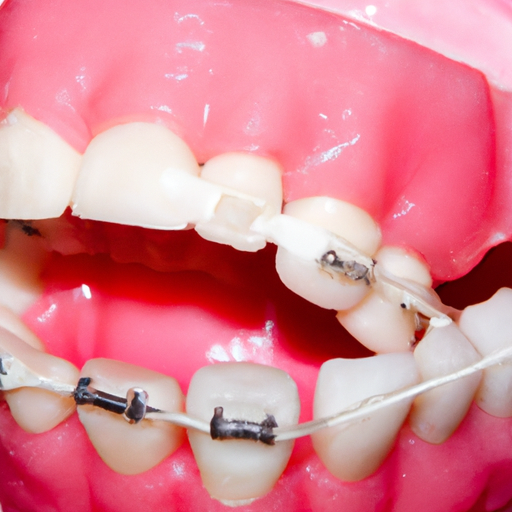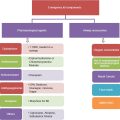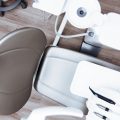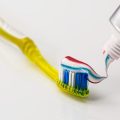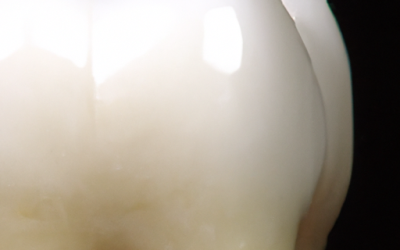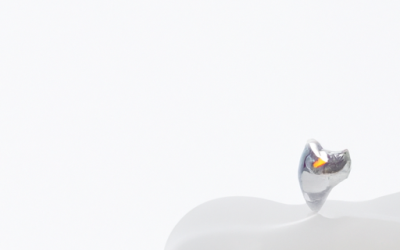So, you’ve found yourself with broken braces and wondering what to do next. Don’t panic! Orthodontic emergencies like broken wires or brackets can definitely throw a wrench in your smile, but there’s a solution. The good news is that an orthodontist is there to save the day and make the necessary repairs. In this article, we’ll discuss the steps you can take to fix your broken braces and get back on track to a perfect smile.
Symptoms of Broken Braces
When you have braces, it’s important to be aware of any symptoms that may indicate your braces are broken. Here are some common symptoms to look out for:
Loose brackets
One of the most common symptoms of broken braces is a loose bracket. If you notice that one of the brackets on your teeth is moving or feels loose, it’s likely that the adhesive has weakened or the bracket itself has become damaged.
Poking wires
Another symptom of broken braces is when the wires start poking or sticking out from the brackets. This can be very uncomfortable and irritating to your gums and cheeks.
Pain or discomfort
If you’re experiencing persistent pain or discomfort in your mouth while wearing braces, it may be a sign that something is not right. This could be due to broken brackets, loose wires, or other issues with your braces.
Temporary Solutions
If you encounter any of the symptoms mentioned above, there are a few temporary solutions you can try before visiting your orthodontist. These solutions can help alleviate discomfort and prevent further damage to your braces.
Using orthodontic wax
Orthodontic wax is a handy tool that can provide temporary relief for various issues with braces. Simply take a small amount of wax and mold it onto the bracket or wire that is causing irritation. The wax will create a smooth surface, reducing any discomfort caused by poking wires or sharp edges.
Repositioning loose brackets
If you notice a loose bracket, you can try repositioning it temporarily until you can see your orthodontist. Gently slide the bracket back into its correct position, being careful not to apply too much pressure.
Covering sharp edges with orthodontic relief wax
In case you have any sharp edges or jagged wires that are causing irritation, applying orthodontic relief wax can provide immediate relief. Simply place a small amount of wax on the sharp area to create a barrier between the braces and your soft tissues.
Dealing with Loose Brackets
If you have a loose bracket, it’s important to address the issue as soon as possible to prevent further damage to your braces. Here’s what you can do:
Assessing the situation
Take a close look at the bracket and try to determine the extent of the damage. If the bracket is completely detached from your tooth, don’t attempt to reattach it yourself. Instead, keep it safe and make an appointment with your orthodontist.
Reattaching the bracket temporarily
If the bracket is partially loose but still attached to your tooth, you can try repositioning it temporarily to minimize discomfort. Use clean tweezers or your fingers to gently slide the bracket back into place. However, keep in mind that this is just a temporary solution, and you should still contact your orthodontist for further instructions.
Contacting your orthodontist for further instructions
It’s crucial to reach out to your orthodontist as soon as possible after discovering a loose bracket. They will be able to assess the situation and provide you with the necessary guidance to fix the issue. They may ask you to schedule an appointment or provide instructions on how to fix the bracket at home under their supervision.
Addressing Poking Wires
Poking wires can be one of the most uncomfortable symptoms of broken braces. Here’s what you can do to handle this issue:
Pushing the wire back in place
If a wire is poking you, try using the eraser end of a pencil to gently push it back into place. Be very careful not to apply too much pressure, as this could cause the wire to break or further damage your braces.
Covering the end with wax
If you’re unable to reposition the wire, you can use orthodontic wax to cover the end that is poking out. Apply a small piece of wax to the sharp area, pressing it firmly to create a smooth surface. This will help reduce any irritation or discomfort caused by the poking wire.
Using a pencil eraser to adjust the wire
Another temporary solution for a poking wire is to use a pencil eraser to adjust its position. Gently push the wire in the opposite direction of the irritation, using the eraser to guide it. This method can provide temporary relief until you’re able to see your orthodontist for a more permanent fix.
Managing Discomfort
Dealing with discomfort caused by broken braces can be challenging, but there are a few strategies you can try to help manage the pain and discomfort:
Rinsing with warm saltwater
To soothe sore gums or alleviate any discomfort, try rinsing your mouth with warm saltwater. Mix a teaspoon of salt into a glass of warm water, swish it around your mouth for a minute or two, and then spit it out. Saltwater rinses have natural antibacterial properties and can help reduce inflammation.
Taking over-the-counter pain relievers
Over-the-counter pain relievers like ibuprofen or acetaminophen can be effective in managing the pain associated with broken braces. Follow the instructions on the packaging and consult with your healthcare professional if you have any concerns or questions.
Using oral numbing gels
Oral numbing gels can provide temporary relief by numbing the irritated area. Apply a small amount of gel to the affected area using a cotton swab or your clean finger. Keep in mind that numbing gels are a temporary solution and should not replace professional orthodontic care.
View all our emergency dental services
Permanent Solutions
While temporary solutions can provide temporary relief, it’s important to visit your orthodontist for a professional fix to ensure the long-term success of your orthodontic treatment. Here are some permanent solutions your orthodontist may recommend:
Visiting your orthodontist for a professional fix
When you experience a symptom of broken braces, it’s crucial to schedule an appointment with your orthodontist as soon as possible. They have the expertise and tools to diagnose and fix any issues with your braces effectively.
Replacing broken brackets or wires
Depending on the severity of the damage, your orthodontist may need to replace any broken brackets or wires. They will carefully remove the damaged component and replace it with a new one, ensuring that your braces are functioning optimally.
Considering alternative treatment options
In some cases, if the damage to your braces is extensive, your orthodontist may need to explore alternative treatment options. They will work with you to find the best solution to correct your dental issues and ensure that your orthodontic treatment continues smoothly.
Preparing for Your Orthodontist Visit
Before you visit your orthodontist to address the issues with your broken braces, it’s important to be prepared. Here are a few things you can do:
Documenting the issue
Take note of when you first noticed the symptoms and any changes you’ve observed since then. This information can be helpful for your orthodontist to understand the severity of the problem.
Gathering any broken bracket or wire pieces
If any brackets or wires have come loose or broken off, try to collect the pieces and bring them with you to your orthodontist appointment. This can assist them in assessing the damage and determining the best course of action.
Being ready to explain the discomfort experienced
Prepare to explain in detail the discomfort or pain you’ve been experiencing since the issue with your braces occurred. This will help your orthodontist better understand your symptoms and provide the appropriate treatment.
Preventive Measures
While it’s common for braces to have occasional issues, there are preventive measures you can take to minimize the risk of broken braces. Here are some tips:
Maintaining a braces-friendly diet
Be mindful of the foods you eat to avoid putting too much pressure on your braces. Stick to softer foods and cut up harder foods into bite-sized pieces to reduce the risk of damaging your braces.
Avoiding bad habits like nail-biting
Habits like nail-biting or chewing on pens can be detrimental to your braces. Break these habits to prevent unnecessary pressure on your braces and reduce the risk of a bracket or wire coming loose.
Properly cleaning and caring for braces
Maintain a good oral hygiene routine by brushing and flossing your teeth regularly. Pay extra attention to cleaning around the brackets and wires to avoid any build-up of food particles and plaque that could weaken the braces.
Common Causes of Broken Braces
Understanding the common causes of broken braces can help you avoid potential problems. Here are a few common causes to be aware of:
Eating hard or sticky foods
Biting into hard foods like nuts, popcorn kernels, or ice can put excessive pressure on your braces and lead to bracket or wire breakage. Additionally, sticky foods like caramel or chewing gum can get stuck in your braces, making them more susceptible to damage.
Chewing on foreign objects
Avoid chewing on foreign objects like pen caps or pencils, as this can cause brackets or wires to become dislodged or damaged. Stick to chewing on food rather than non-food items to prevent unnecessary stress on your braces.
Damaging impact or trauma
Accidents happen, and if you experience a significant impact to your face or mouth, there’s a chance that your braces could become damaged. Be cautious during physical activities and wear a mouthguard if necessary to protect your teeth and braces.
The Importance of Regular Check-ups
Regular check-ups with your orthodontist are essential to ensure the success of your orthodontic treatment. Here’s why they are important:
Detecting potential issues early
During regular check-ups, your orthodontist can assess the progress of your treatment and identify any potential issues. By catching problems early, they can provide timely interventions and prevent more significant issues from occurring.
Making necessary adjustments
During check-ups, your orthodontist may need to make adjustments to your braces to ensure they continue to work effectively. This can involve tightening wires, replacing worn-out rubber bands, or making other necessary modifications.
Ensuring treatment progress
Regular check-ups allow your orthodontist to monitor your progress and ensure that your treatment is on track. They can evaluate how your teeth are moving and make any necessary adjustments to ensure optimal alignment.
In conclusion, broken braces can be uncomfortable and inconvenient, but with the right knowledge and temporary solutions, you can manage the symptoms until you can see your orthodontist for a permanent fix. Remember to practice good oral hygiene and be mindful of the foods you eat to prevent further damage to your braces. Regular check-ups are crucial for maintaining the progress of your treatment and catching any issues early on. With proper care and adherence to your orthodontist’s instructions, you’ll be back on track to achieving a beautiful, straight smile.

